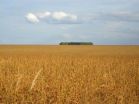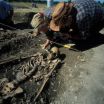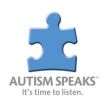(Press-News.org) Mining the genome of the disease-transmitting tsetse fly, researchers have revealed the genetic adaptions that allow it to have such unique biology and transmit disease to both humans and animals.
The tsetse fly spreads the parasitic diseases human African trypanosomiasis, known as sleeping sickness, and Nagana that infect humans and animals respectively.
Throughout sub-Saharan Africa, 70 million people are currently at risk of deadly infection. Human African trypanosomiasis is on the World Health Organization's (WHO) list of neglected tropical diseases and since 2013 has become a target for eradication. Understanding the tsetse fly and interfering with its ability to transmit the disease is an essential arm of the campaign.
This disease-spreading fly has developed unique and unusual biological methods to source and infect its prey. Its advanced sensory system allows different tsetse fly species to track down potential hosts either through smell or by sight. This study lays out a list of parts responsible for the key processes and opens new doors to design prevention strategies to reduce the number of deaths and illness associated with human African trypanosomiasis and other diseases spread by the tsetse fly.
"Tsetse flies carry a potentially deadly disease and impose an enormous economic burden on countries that can least afford it by forcing farmers to rear less productive but more trypanosome-resistant cattle." says Dr Matthew Berriman, co-senior author from the Wellcome Trust Sanger Institute. "Our study will accelerate research aimed at exploiting the unusual biology of the tsetse fly. The more we understand, the better able we are to identify weaknesses, and use them to control the tsetse fly in regions where human African trypanosomiasis is endemic."
The team, composed of 146 scientists from 78 research institutes across 18 countries, analysed the genome of the tsetse fly and its 12,000 genes that control protein activity. The project, which has taken 10 years to complete, will provide the tsetse research community with a free-to-access resource that will accelerate the development of improved tsetse-control strategies in this neglected area of research.
The tsetse fly is related to the fruit fly – a favoured subject of biologists for more than 100 years – but its genome is twice as large. Within the genome are genes responsible for its unusual biology. The reproductive biology of the tsetse fly is particularly unconventional: unlike most insects that lay eggs, it gives birth to live young that have developed to a large size by feeding on specialised glands in the mother.
Researchers found a set of visual and odour proteins that seem to drive the fly's key behavioural responses such as searching for hosts or for mates. They also uncovered the photoreceptor gene rh5, the missing link that explains the tsetse fly's attraction to blue/black colours. This behaviour has already been widely exploited for the development of traps to reduce the spread of disease.
"Though human African trypanosomiasis affects thousands of people in sub-Saharan Africa, the absence of a genome-wide map of tsetse biology was a major hindrance for identifying vulnerabilities, says Dr Serap Aksoy, co-senior author from the University of Yale. "This community of researchers across Africa, Europe, North America and Asia has created a valuable research tool for tackling the devastating spread of sleeping sickness."
Tsetse flies have an armament of salivary molecules that are essential for feeding on blood. The team found one family of genes, the tsal genes, that are particularly active in the salivary glands of the tsetse fly. This allows the tsetse fly to counteract the responses from the host to stop bloodfeeding. This finding and several others are explored in more detail in eight research papers that accompany the publication of the tsetse fly genome in Science.
"This information will be very useful to help develop new tools that could reduce or even eradicate tsetse flies," says Dr John Reeder, Director of the Special Programme for Research Training in Tropical Diseases, at WHO. "African sleeping sickness is understudied, and we were very pleased to help bring together so many research groups to work collaboratively with the one shared goal in sight – the elimination of this deadly disease."
INFORMATION:
Notes to Editors
Publication Details
International Glossina Genome Initiative (2014) Genome Sequence of the Tsetse Fly (Glossina morsitans): Vector of African Trypanosomiasis. Science
DOI:10.1126/science.1249656
Associated studies can be found on the PLOS website: http://www.ploscollections.org/tsetse
Funding
Please see the paper for a full list of funding bodies.
Participating Centres
Please see the paper for a full list of participating centres.
Selected Websites
The Wellcome Trust Sanger Institute is one of the world's leading genome centres. Through its ability to conduct research at scale, it is able to engage in bold and long-term exploratory projects that are designed to influence and empower medical science globally. Institute research findings, generated through its own research programmes and through its leading role in international consortia, are being used to develop new diagnostics and treatments for human disease.
http://www.sanger.ac.uk
The Wellcome Trust is a global charitable foundation dedicated to achieving extraordinary improvements in human and animal health. We support the brightest minds in biomedical research and the medical humanities. Our breadth of support includes public engagement, education and the application of research to improve health. We are independent of both political and commercial interests.
http://www.wellcome.ac.uk
Contact details
Don Powell Media Manager
Wellcome Trust Sanger Institute
Hinxton, Cambridge, CB10 1SA, UK
Tel +44 (0)1223 496 928
Mobile +44 (0)7753 7753 97
Email press.office@sanger.ac.uk
End of Notes to Editors
Tsetse fly genome reveals weaknesses
International 10-year project unravels biology of disease-causing fly
2014-04-24
ELSE PRESS RELEASES FROM THIS DATE:
Stanford team makes switching off cells with light as easy as switching them on
2014-04-24
STANFORD, Calif. — In 2005, a Stanford University scientist discovered how to switch brain cells on or off with light pulses by using special proteins from microbes to pass electrical current into neurons.
Since then, research teams around the world have used the technique that this scientist, Karl Deisseroth, MD, PhD, dubbed "optogenetics" to study not just brain cells but heart cells, stem cells and the vast array of cell types across biology that can be regulated by electrical signals — the movement of ions across cell membranes.
Optogenetics gave researchers a powerful ...
Cosmic illusion revealed
2014-04-24
This press release is available in Japanese.
Kashiwa Japan - A team of researchers led by Robert Quimby at the Kavli Institute for the Physics and Mathematics of the Universe (Kavli IPMU) has announced the discovery of a galaxy that magnified a background, Type Ia supernova thirtyfold through gravitational lensing. This is the first example of strong gravitational lensing of a supernova confirms the team's previous explanation for the unusual properties of this supernova.
The team has further shown how such discoveries of supernovae of Type Ia (SNIa) can be made far ...
Untangling Brazil's controversial new forest code
2014-04-24
Approved in 2012, Brazil's new Forest Code has few admirers. Agricultural interests argue that it threatens the livelihoods of farmers. Environmentalists counter that it imperils millions of hectares of forest, threatening to release the billions of tons of carbon they contain. A new study, co-authored by Woods Hole Research Center (WHRC) scientists Michael Coe, Marcia Macedo and Brazilian colleagues, published this week in Science, aims to clarify the new law. Entitled "Cracking Brazil's Forest Code," the article is the first to quantify the implications of recent changes ...
Genomic diversity and admixture differs for Stone-Age Scandinavian foragers and farmers
2014-04-24
An international team led by researchers at Uppsala University and Stockholm University reports a breakthrough on understanding the demographic history of Stone-Age humans. A genomic analysis of eleven Stone-Age human remains from Scandinavia revealed that expanding Stone-age farmers assimilated local hunter-gatherers and that the hunter-gatherers were historically in lower numbers than the farmers. The study is published today, ahead of print, in the journal Science.
The transition between a hunting-gathering lifestyle and a farming lifestyle has been debated for a century. ...
Some corals adjusting to rising ocean temperatures, Stanford researchers say
2014-04-24
To most people, 86-degree Fahrenheit water is pleasant for bathing and swimming. To most sea creatures, however, it's deadly. As climate change heats up ocean temperatures, the future of species such as coral, which provides sustenance and livelihoods to a billion people, is threatened.
Through an innovative experiment, Stanford researchers led by biology Professor Steve Palumbi have shown that some corals can – on the fly – adjust their internal functions to tolerate hot water 50 times faster than they would adapt through evolutionary change alone. The findings, published ...
Genetic code of the deadly tsetse fly unraveled
2014-04-24
A decade-long effort by members of the International Glossina Genome Initiative (IGGI) has produced the first complete genome sequence of the tsetse fly, Glossina morsitans. The blood-sucking insect is the sole transmitter of sleeping sickness, a potentially deadly disease endemic in sub-Saharan Africa. The vast store of genetic data will help researchers develop new ways to prevent the disease and provide insights into the tsetse fly's unique biology.
The tsetse fly is quite unique in the insect world: it feeds exclusively on the blood of humans and animals, gives birth ...
Study finds accelerated soil carbon loss, increasing the rate of climate change
2014-04-24
Research published in Science today found that increased levels of carbon dioxide in the atmosphere cause soil microbes to produce more carbon dioxide, accelerating climate change.
Two Northern Arizona University researchers led the study, which challenges previous understanding about how carbon accumulates in soil. Increased levels of CO2 accelerate plant growth, which causes more absorption of CO2 through photosynthesis.
Until now, the accepted belief was that carbon is then stored in wood and soil for a long time, slowing climate change. Yet this new research suggests ...
The Ancient Maya and virtual worlds: Different perspectives on material meanings
2014-04-24
If Facebook were around 1,400 years ago, the ancient Maya might have been big fans of the virtual self.
The Maya believed that part of your identity could inhabit material objects, like a courtier's mirror or sculptor's carving tool. Maya might even name these objects, talk to them or take them to special events. They considered these items to be alive.
The practice of sharing your identity with material possessions might seem unusual in a modern context.
But is it that different from today's selfie-snapping, candy-crushing online culture, where social media profiles ...
Autism Genome Project delivers genetic discovery
2014-04-24
NEW YORK, N.Y. (April 24, 2014) – A new study from investigators with the Autism Genome Project, the world's largest research project on identifying genes associated with risk for autism, has found that the comprehensive use of copy number variant (CNV) genetic testing offers an important tool in individualized diagnosis and treatment of autism.
Funded primarily by Autism Speaks, the world's leading autism science and advocacy organization, the Autism Genome Project involved more than 50 research centers in 11 countries. The report, published today in the American Journal ...
Measles commentary in Annals of Internal Medicine
2014-04-24
1. Measles outbreaks prompt concern about physician knowledge gaps
Vaccination refusal and importation of the disease has led to increased incidence of measles in the United States. Before widespread vaccination, approximately 500,000 measles cases occurred annually, resulting in 500 deaths and 48,000 hospitalizations. Vaccination programs helped to eradicate endemic measles by the year 2000, reducing the median number of cases per year to 60. But in just the first three months of 2014, 106 measles cases were reported, prompting health officials to become concerned. Measles ...
LAST 30 PRESS RELEASES:
Automatic label checking: The missing step in making reliable medical AI
Low daily alcohol intake linked to 50% heightened mouth cancer risk in India
American Meteorological Society announces Rick Spinrad as 2026 President-Elect
Biomass-based carbon capture spotlighted in newly released global climate webinar recording
Illuminating invisible nano pollutants: advanced bioimaging tracks the full journey of emerging nanoscale contaminants in living systems
How does age affect recovery from spinal cord injury?
Novel AI tool offers prognosis for patients with head and neck cancer
Fathers’ microplastic exposure tied to their children’s metabolic problems
Research validates laboratory model for studying high-grade serous ovarian cancer
SIR 2026 delivers transformative breakthroughs in minimally invasive medicine to improve patient care
Stem Cell Reports most downloaded papers of 2025 highlight the breadth and impact of stem cell research
Oxford-led study estimates NHS spends around 3% of its primary and secondary care budget on the health impacts of heat and cold in England
A researcher’s long quest leads to a smart composite breakthrough
Urban wild bees act as “microbial sensors” of city health.
New study finds where you live affects recovery after a hip fracture
Forecasting the impact of fully automated vehicle adoption on US road traffic injuries
Alcohol-related hospitalizations from 2016 to 2022
Semaglutide and hospitalizations in patients with obesity and established cardiovascular disease
Researchers ‘listen in’ to embryo-mother interactions during implantation using a culture system replicating the womb lining
How changing your diet could help save the world
How to make AI truly scalable and reliable for real-time traffic assignment?
Beyond fragmented markets: A new framework for efficient and stable ride-pooling
Can shape priors make road perception more reliable for autonomous driving?
AI tracks nearly 100 years of aging research, revealing key trends and gaps
Innovative techniques enable Italy’s first imaging of individual trapped atoms
KIER successfully develops Korea-made “calibration thermoelectric module” for measuring thermoelectric device performance
Diversifying US Midwest farming for stability and resilience
Emphasizing immigrants’ deservingness shifts attitudes
Japanese eels, climate change, and river temperature
Pusan National University researchers discover faster, smarter heat treatment for lightweight magnesium metals
[Press-News.org] Tsetse fly genome reveals weaknessesInternational 10-year project unravels biology of disease-causing fly





